Brands are increasingly adopting marketing automation, with email marketing as the most common application. Marketing automation has great potential to help deliver personalized useful messages to an audience that wants them.
Yet a recent Econsultancy study found that 37% of brands say their marketing automation efforts are not successful. I wonder how much of the failure rate relates to how the tool is frequently used.
I think that spam sent via marketing automation tools is still spam. If it’s unsolicited communication, I don’t think it matters that it’s sent out with sophisticated rules and beautiful marketing scripts that get your name right — it’s still spam.
Nearly 20 years ago, Seth Godin published the classic book “Permission Marketing”. It’s an oldie, but I think in the emerging world of marketing automation, it’s more relevant and prescient than ever.
Here’s how Seth once defined “Permission Marketing”:
“Permission marketing is the privilege (not the right) of delivering anticipated, personal and relevant messages to people who actually want to get them.
“It recognizes the new power of the best consumers to ignore marketing. It realizes that treating people with respect is the best way to earn their attention.
“Pay attention is a key phrase here, because permission marketers understand that when someone chooses to pay attention they are actually paying you with something precious. And there’s no way they can get their attention back if they change their mind. Attention becomes an important asset, something to be valued, not wasted.
“Real permission is different from presumed or legalistic permission. Just because you somehow get my email address doesn’t mean you have permission. Just because I don’t complain doesn’t mean you have permission. Just because it’s in the fine print of your privacy policy doesn’t mean it’s permission either.
“Real permission works like this: if you stop showing up, people complain, they ask where you went.”
I really like the idea of thinking of marketing as a “privilege”, not a “right”. I think that’s a useful framework to keep in mind when thinking about how to adopt marketing automation tools.
Here are a few related cartoons I’ve drawn over the years.
“Personalization” November 2014
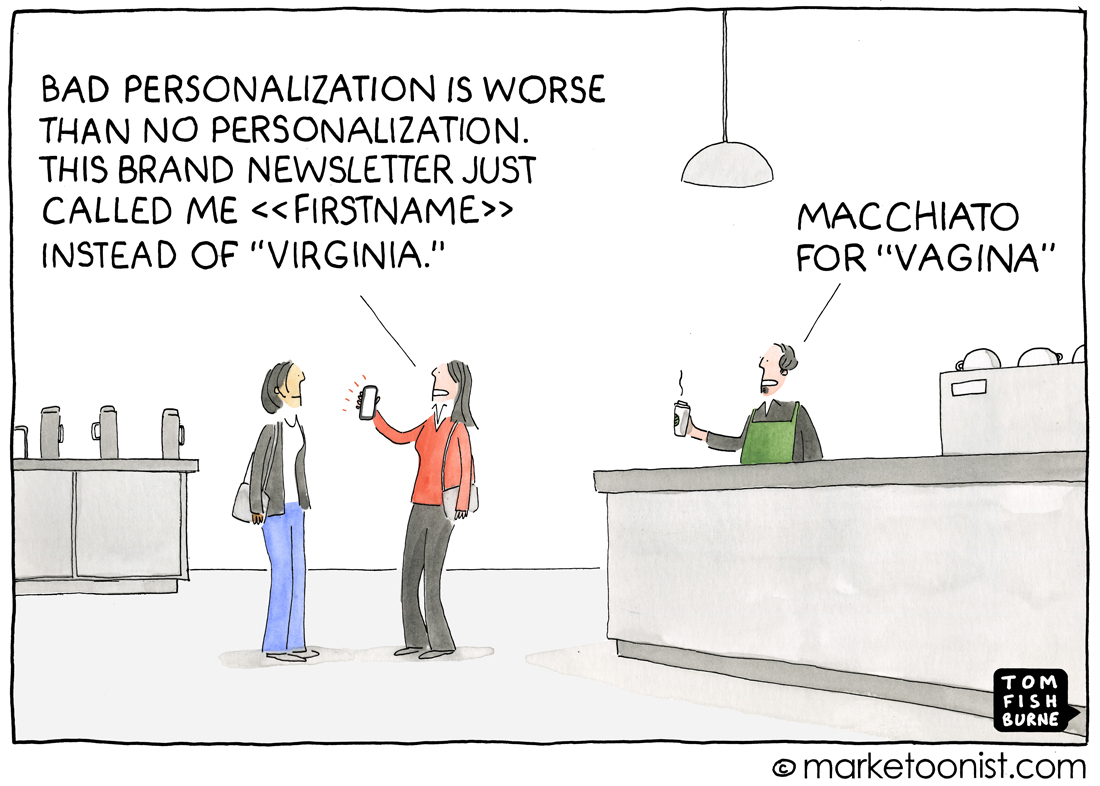
“Marketing Funnel” January 2015
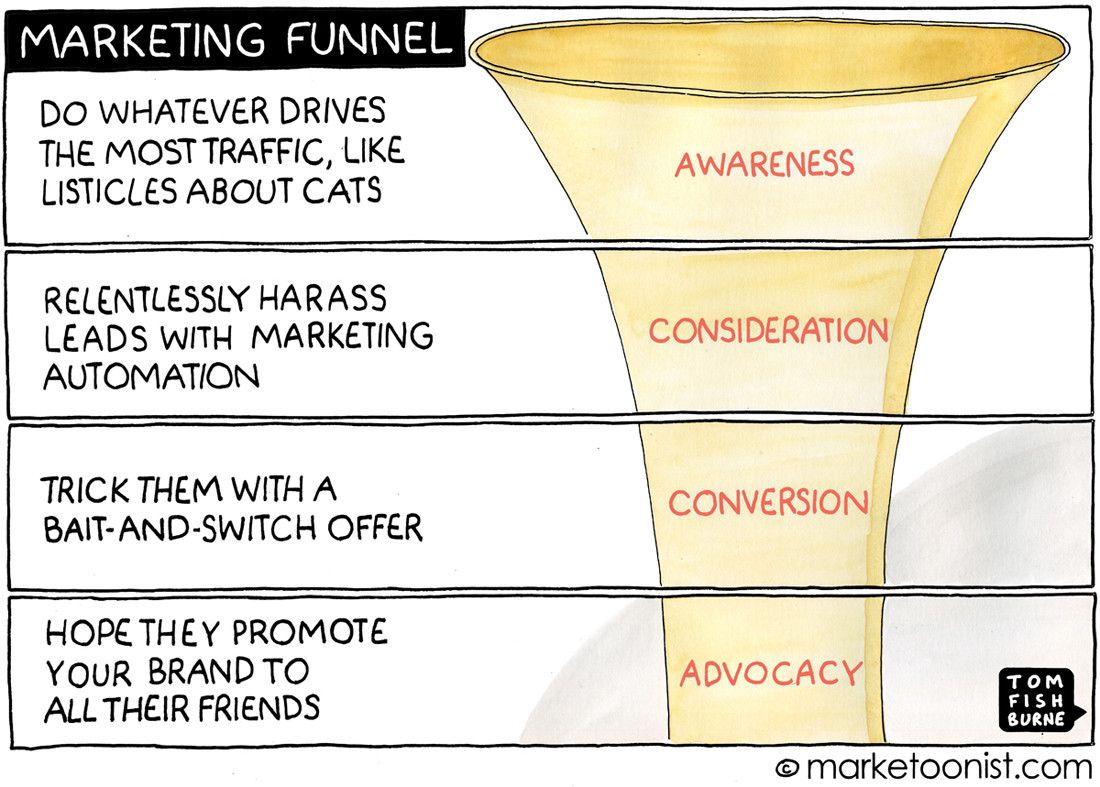
“Email Marketing” June 2016
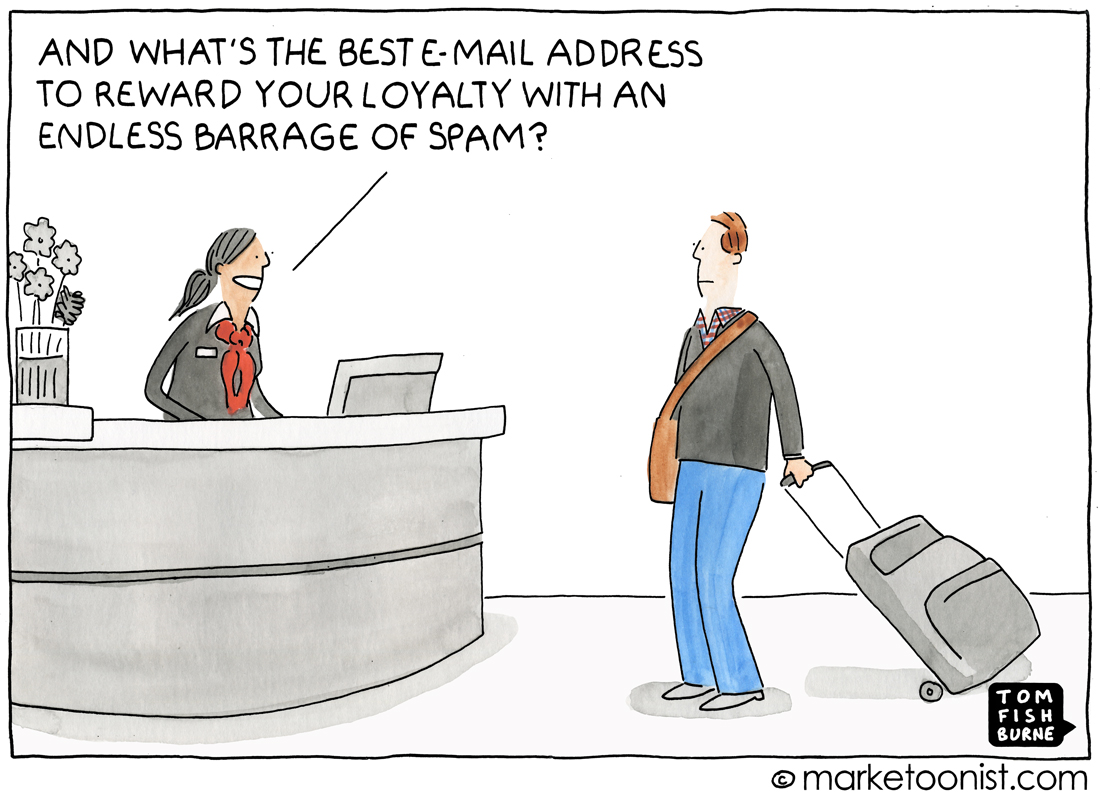

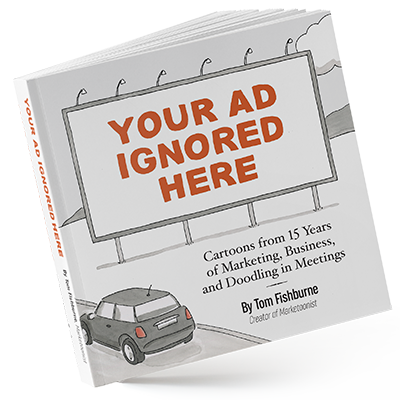
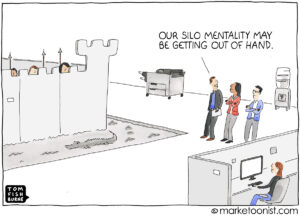
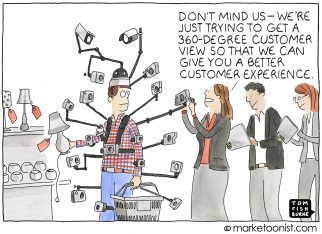
Suzanne Pecore says
This really hits home, more from a consumer perspective than a researcher. I really sparked to your last cartoon about asking for email addresses. One of pet peeves – a cashier asks if I want to join their loyalty program and I say no, they respond (incredulously) “why not? it’s free and you get points/coupons/% off/whatever”, I reply that I hate all the emails, and they respond, “but you can turn that feature off.” Arggh…why do I have to turn it off when I don’t want the emails clogging my inbox in the first place? Well, I know what the marketers are hoping, but it does nothing for my loyalty. Definitely not earned!
Ted L Simon says
Sheer poetry, Tom. Thanks for reminding us of Seth Godin’s keen observations that ring even more true today than ever.
I hear and see too many marketers (and CEOs) get so hopped up over their ability to automate that they lose sight of these fundamental principals, resulting in what I call “automation decimation.” Tools are good, but they are truly great when people use them properly.
ASIT GUPTA says
I doubt if things will change. Brand owners espl the big ones continue to look for that perfectly targetted interruption to convert. All of them talk to the same big consultants and CRM companies offering the same set of tools and they hope to get a different result. Amusing :)). Very few are adopting Seth’s “PERMISSION” marketing or what we propose ‘Marketing with people, not @ them”. Permission marketing requires a very human mindset. Most big brand marketing (despite a brand purpose baked in) is command and control 360 campaigns run by folks who love to go to Cannes in the summers:)
Richard Warland says
Only too true! I can remember way back in prehistoric times (the ’80s) when my company had a British Earl on its list.
We sent him a letter with the greeting “Dear Earl of”
Since those days I have said, if we can’t get it 100% right, we don’t do it!
Lola Tan says
Yes, recently I read the books about “Permission marketing” from Seth. I believe people understand this theory. But maybe people are too lazy and do not willing to find out how to add value to their customers.
On the other hand, I just working in an architectural visualization market, I really don’t know how to add value to them. Really struggling……